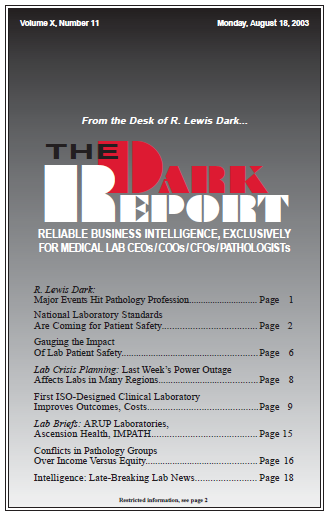CEO SUMMARY: In the first 14 months of operation, Kaiser Permanente Northwest’s new automated regional laboratory facility, the nation’s first designed by an ISO-9000-certified lab organization, is yielding big gains in both productivity and outcomes. In its high-volume core lab, productivity more than doubled, while the new laboratory’s average cost-per-test declined by 8.7% during that …
First ISO-Designed Clinical Lab Improves Outcomes, Costs Read More »
To access this post, you must purchase The Dark Report.


